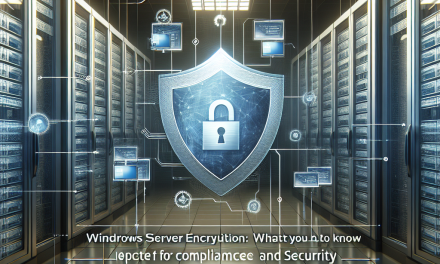In the ever-evolving landscape of cybersecurity, organizations face persistent threats to their networks and data. One of the critical components of a secure IT environment is a well-configured and managed Active Directory (AD). This article explores a holistic approach to Active Directory security, focusing on the shift from mere configuration to comprehensive coordination.
Understanding Active Directory
Active Directory is the backbone of identity and access management within Windows environments. It manages user identities, authenticates users, and facilitates authorization for resources. Given its pivotal role, AD’s security is paramount. A single breach can lead to unauthorized access to sensitive information, causing significant damage to an organization’s reputation and finances.
The Traditional Approach: Configuration
Historically, organizations have focused on the configuration aspect of Active Directory security. This includes:
-
User Account Management: Creating and managing user accounts and groups, ensuring the principle of least privilege (PoLP) is followed.
-
Password Policies: Implementing strong password policies, enabling multi-factor authentication (MFA), and regularly updating credentials.
-
Access Control: Establishing permissions and group policies to restrict user access based on their roles.
- Auditing and Monitoring: Regularly reviewing logs to identify suspicious activities or configurations that could lead to security breaches.
While these steps are crucial, they often lack the integration necessary to respond to modern threats.
The Need for Coordination
A holistic approach to Active Directory security transcends these individual configuration tasks. Coordination involves integrating these security measures into a comprehensive strategy that includes:
1. Risk Assessment and Management
Understanding your organization’s specific risks is vital. Conduct regular assessments to identify vulnerabilities within your Active Directory environment. This includes not just technical weaknesses but also process-related issues.
2. Cross-Functional Collaboration
Security is not just the responsibility of the IT department. Engage various departments, including HR, compliance, and management, in establishing security policies. Collaboration ensures that security considerations align with business objectives.
3. Continuous Monitoring and Incident Response
Implement robust monitoring solutions that provide real-time alerts for suspicious activities. Establish an incident response plan that coordinates actions across teams, ensuring quick and effective responses to security incidents.
4. User Education and Awareness
End users are often the weakest link in the security chain. Provide training to all employees about the significance of security, phishing threats, and best practices for password management. An informed workforce can serve as a frontline defense.
5. Regular Reviews and Adaptation
Security is an ongoing process. Schedule regular reviews of your Active Directory security configurations and policies. The threat landscape evolves, and so should your security measures. Look for updates and enhancements in security technologies that could benefit your organization.
Tools and Technologies for Enhanced Security
To support this coordinated approach, organizations can leverage various tools and technologies:
-
Identity and Access Management (IAM) solutions can automate user provisioning and de-provisioning while ensuring compliance.
-
Security Information and Event Management (SIEM) systems aggregate data from across the network, providing insights into security incidents.
-
Privileged Access Management (PAM) tools help manage and monitor accounts with elevated privileges, reducing the attack surface.
- Endpoint Detection and Response (EDR) solutions can provide additional layers of security by monitoring endpoints for unusual activities.
Conclusion
The landscape of cybersecurity is complex, and a simple focus on configuration is no longer sufficient for securing Active Directory environments. The shift from a reactive stance to a coordinated, proactive approach allows organizations to better protect themselves against evolving threats.
By fostering collaboration, continuous monitoring, and ongoing education, businesses can create a strong security posture that addresses the multifaceted challenges of today’s digital world. Active Directory security is not merely a checkbox on an IT compliance list; it should be viewed as a vital component of an organization’s overall security strategy.
For more insights on enhancing your IT security framework, stay tuned to the WafaTech Blogs, where we explore innovative strategies to keep your organization secure in the digital age.





